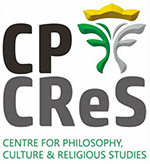Karya Seni dalam Pandangan Jean-Paul Sartre
DOI:
https://doi.org/10.26593/mel.v34i2.3391.193-211Keywords:
consciousness, artworks, imagination, irreality, analogonAbstract
Jean-Paul Sartre offers a different way of looking at artworks. He offers psychological as well as phenomenological perspectives. The artworks referred to by Sartre include music, painting, literature, and theater. In his thoughts related to works of art, Sartre offers a notion of analogon, that has a key role to explain his concept of imagination. With this notion, he goes further to explain the concept of irreality in artworks, of which analogon is a medium or a material vehicle. When enjoying an artwork, one is enjoying the analogon. Music can be seen as an excess of reality, literature finds its role within its social environment, a painting provokes a viewer to rise certain images in his or her cosciousness, and an actor in theater not simply portrays the characters of a personage because he becomes ‘not real’ in playing his role on the stage. All this brings to the understanding of artwork as irreality.Downloads
Published
2019-08-01
Issue
Section
Articles
License
MELINTAS applies the Creative Commons Attribution (CC BY NC) license to articles and other works we publish. If you submit your paper for publication by MELINTAS, you agree to have the CC BY NC license applied to your work.


